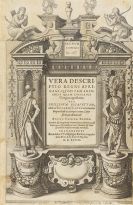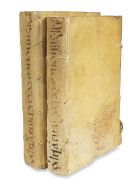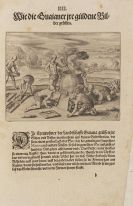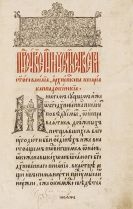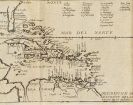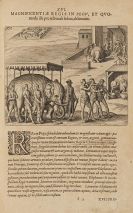
Johannes Kepler
Weil
1571 -
Regensburg
1630
The astronomer and mathematician Johannes Kepler was born on December 27, 1571 in Weil (Germany) and died on November 15, 1630 in Regensburg. Having changed schools several times for various reasons, he began to study at the Swabian university in Tübingen in 1589, where his main teacher was the mathematician and astronomer Michael Mästlin, who introduced him to the Copernican heliocentric idea of the universe.
In August 1591 Kepler received his master's degree. Subsequently he studied theology more intensively, which he had been introduced to by the polemic Stephan Gerlach and the exegete Matthias Hafenreffer. When he was in his third year of reading theology, Kepler was called to the university of Graz, where he taught from March 1594. In 1595 to 1599 he produced 5 calendars alongside his teaching career, the production of which was one of his main tasks as Mathematicus. His apt predictions for 1594 (cold winter, invasion of the Turks) soon turned Johannes Kepler into a famous astrologist.
In 1596 he published his "Mysterium cosmographicum", which combined the Copernican system with five platonic bodies in a spectacular way. Tycho Brahe, who had become aware of him because of this piece, brought him to Prague in 1600 under Kaiser Rudolph II. In the fall of 1604 he published "Silvae chronologicae" in Prague, in 1605 "De Stella nova in pede Serpentarii" ("On the New Star in Ophiuchus's Foot") and in 1607 a text on a comet that appeared that year.
"Astronomia nova", which includes Kepler's first and second law of planetary motion, formed the essence of his work. In it he was the first to present a focal point equation for conic section. In 1618 Johannes Kepler formed his third law of planetary motion, in which he discovered the interdependence between orbital period and the mean distance of planets from the sun. This third law can be found in "Harmonices mundi" (1619). In his book "De stella martis" (1609), Johannes Kepler dealt with the gravitational force working between earth and moon and proved the influence of the moon on the tides.
In 1611 Kepler invented an astronomical telescope, named the Kepler-telescope in his honor. In this context he also introduced terms like "prism", "lens" and "meniscus".
More on this issue can be found in his "Dioptrice", which deals with geometrical optics. It is furthermore worth mentioning, that Kepler outlined a comprehensive and correct theory on the benefits of spectacles and studied the passage of light through refractive media.
Johannes Kepler determined the astronomical refraction of rays and calculated a formula for it, which was completed geometrically by J. D. Cassini in 1661. In 1627, after a long delay in printing, his "Tabulae Rudolphinae" were published.
From 1601 Kepler had already worked on the design of tables containing solar, lunar and planetary locations. Thanks to the logarithms, newly discovered by Napier in 1614, he finally managed to execute the complicated calculations for his "Tabulae", which formed the basis of numerous astronomical calculations during the next 200 years. His contribution to the development of modern infinitesimal calculus is based on his most important piece on mathematics, "Nova stereometria doliorum vinariorum" (1615), in which he calculated areas and volumes with the help of indivisibles (his so-called "Keplersche Fassregel").
In 1628 he entered into the service of A. von Wallenstein as a mathematician and moved to Sagan (Silesia). His last work "Somnium seu astronomia lunaris" (1634) is an utopic description of the life of lunar creatures.
Would you like to sell a work by Johannes Kepler?
Infos for seller
